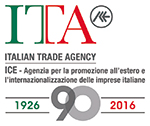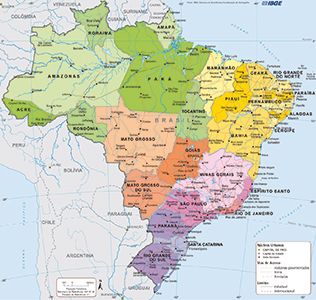Markets to explore: Brazil
 The column dedicated to Italian companies operating in the packaging with a keen eye to the possibilities of growth and development abroad is born out of the collaboration between ICE-Agenzia and Edizioni Dativo. The network of ICE offices abroad will provide a regular update on the development of the packaging in the short/medium term in selected countries.
The column dedicated to Italian companies operating in the packaging with a keen eye to the possibilities of growth and development abroad is born out of the collaboration between ICE-Agenzia and Edizioni Dativo. The network of ICE offices abroad will provide a regular update on the development of the packaging in the short/medium term in selected countries.
As reported by the ICE office in São Paulo, according to research conducted by IBRE/FGV (Brazilian Economic Institute and Fundação Getúlio Vargas), in 2015 the country’s packaging sector generated more than 200,000 jobs, registering a net turnover of 57.2 billion reais, an increase of approximately 4.76% compared to 2014’s 54.6 billion. Forecasts predict further growth equivalent to around 60.5 billion reais in 2016. The strongest results have been achieved by the food and beverage industry, but all sectors see rising demand for new technologies aimed at reducing production costs by using smaller format packaging with lower mass or made using different materials, for example new, low impact polymers. Packaging sustainability and facilitated recycling are the main targets, shared by all sectors and applications.

Imports
During the course of 2015 there was a 4.91% drop in imports of packaging machinery. Italy continues to be Brazil’s main supplier, with a share of 29.44%, followed by Germany with 27.03% and Sweden with 8.77%. Table 1 illustrates the compared performance of major supplier countries between 2013 and 2015. Italian machinery enjoys an excellent reputation among Brazilian business owners, who consider them among the best the global market has to offer in terms of both technology and of quality and production efficiency.
The reduction of financing costs through the creation of joint ventures together with Brazilian enterprises and efficient post-sales assistance, characterized by quick parts replacement, could help make Italian concerns more competitive and add value to their offer.
Import costs and customs regime
Brazil is a newcomer to industrialization and, as such, still follows a protectionist approach towards its industry, which translates into tariffs and other barriers that make importing more difficult.
The heavy tax burden imposed by customs fees and tariffs significantly increases the price paid by the end consumer, often making products in various in sectors less than competitive.
Table 2 shows the tariffs on imports of packaging machinery. Below is a more detailed description of the obligations listed in the table.
1 – Import tax: (I.I. = Imposto de Importação) tax on all products imported from countries with which Brazil does not have a partnership agreement providing for total or partial exemption.
2 - IPI (Imposto sobre Produtos Industrializados, tax on industrialized goods). This tax applies even to products made in Brazil, but at a different rate. In the case of imported products, the IPI is calculated on the value of the company tax + import tax. As occurs in the case of the import tax, the IPI rate varies from product to product and enjoys exemptions for certain products and certain places of origin.
3 - ICMS (Imposto sobre a Circulação de Mercadorias e Serviços, tax on distribution of goods and services). Calculated on the basis of company tax + import tax + IPI + other tariffs/taxes and on the ICMS itself.
4 - AFRMM (Adicional de Frete para Renovação da Marinha Mercantil, freight additional). This tax was created in order to generate funds to renovate the Brazilian merchant fleet and is calculated as 25% of the value of the freight.
5 and 6 - PIS (social contribution tax) and COFINS (contribution to social security).
In order to calculate these obligations, an importer need simply apply the respective rates to the company tax value of the imported good.
4 - AFRMM (Adicional de Frete para Renovação da Marinha Mercantil, ovvero Addizionale sul Nolo Marittimo). È un’imposta creata al fine di generare un fondo per favorire il rinnovo della Marina Mercantile Brasiliana e quindi, del 25% sul valore del nolo marittimo.
5 e 6 - PIS (Programma di Integrazione Sociale) e COFINS (Contributo per il finanziamento della Sicurezza Sociale). Per il calcolo, basta applicare le rispettive aliquote sul valore CIF della merce.
NOTA
The project is coordinated ICE-Agenzia headquarters in Rome, by the Industrial Technology, - Energy and Environment office headed by Ferdinando Pastore. Contacts: Matteo Masini,
tel 06.5992.9356 [email protected]

















